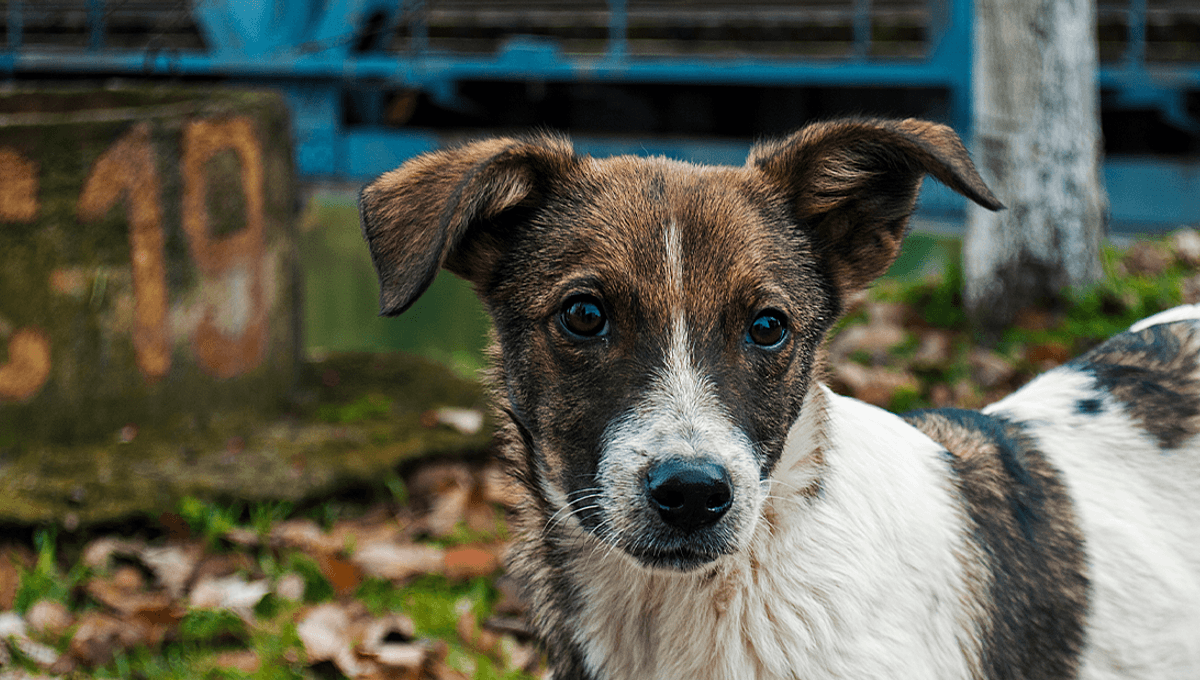
The 1986 Chernobyl power plant accident was the world’s largest nuclear disaster. The subsequent fallout from the fires that burnt for ten days after the explosion released radioactive chemicals that spread through much of northeast Europe, across the continent, and even over into North America. The Chernobyl Exclusion Zone (CEZ), a 2,600 square kilometer (1,615 square mile) area that was most affected by the disaster, has been uninhabited ever since – and now, scientists are looking at the impact of prolonged radiation exposure on the dogs that live there.
The effects of radiation on frogs near Chernobyl have been looked at with some surprising results. However, mammals within the CEZ have been greatly unstudied. Directly following the explosion, populations would have significantly decreased. Some populations of animals thrive without human interference – for example, in Korea’s demilitarized zone, populations of animals are increasing. While some species around Chernobyl have recovered in the nearly 37 years since, many have not.
Free-roaming domestic dogs now present within the CEZ are thought to be the potential descendants of pets left behind when the city was evacuated. While some dogs were culled at the time to help curb the spread of radioactive contamination, evidently some survived and were even fed and cared for by clean-up workers. Populations of dogs today are treated and fed by workers in some areas, and there is even The Chernobyl Dog Research Initiative that was formed in response to the increase in population size, which at one time numbered around 800 individuals.
The researchers found that there are three different groups of dogs within these areas: one group living near Chernobyl City approximately, 15 kilometers (9.3 miles) from the power plant; one group living in the Chernobyl Nuclear Power Plant area (CNPP) itself; and a third group living in Slavutych, a city of comparatively less contamination where people are still living around 45 kilometers (28 miles) from the site of the disaster.
Using blood samples collected from the dogs in each of the three areas, the team could look at the DNA of each dog and compare them for relatedness as well as the effects of the radiation. They found that the CNPP population had the most genetic isolation, suggesting that these dogs most represent the population that was present before or immediately after the disaster.
By comparing the DNA of the three groups of dogs in the areas to DNA from populations of dogs elsewhere in the world, the team was able to show evidence of a clear genetic difference. The team also found evidence of relatedness and kinship between these populations and that three discrete family groups exist. The dogs within the Chernobyl city area shared most DNA with pincher-related breeds, while dogs in the CNPP population had more in common with shepherd breeds. Unlike wild populations of wolves that form family groups with defined territories, these groups exist in relatively close proximity to each other.
The team concluded by saying that these populations can be used as a model for informing how resources should be managed in these types of disaster situations and help us to understand how humans might survive in areas with extreme environmental conditions. Hopefully, this work will help scientists develop better ideas for living with the effects of radiation than ray cats.
The research is published in Science Advances.
Source Link: How Radiation Exposure From Chernobyl Has Altered The DNA Of Their Dogs